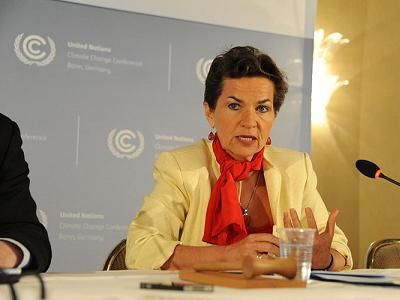U.N. climate chief meets California Governor to address climate change in L.A.
Christiana Figueres and California Governor Jerry Brown met on Monday to discuss climate change impacts in Los Angeles

The United Nations’ climate chief Christiana Figueres and California Governor Jerry Brown met on Monday to address climate change impacts in Los Angeles.
Figueres, the Executive Secretary of the UN Framework Convention on Climate Change (UNFCCC), and Governor Brown were joined by leading experts and scientists at the Natural History Museum of Los Angeles County.
The meeting focussed on global warming and the need for government engagement.
Figueres (pictured) said: “If we do not do something radically different, we are heading to catastrophe…Think of it truly as a big, huge ship, where a small little signal from the captain right now takes you, over time, in a completely different direction.”
In May, California joined international leaders from 11 other states and provinces from the U.S., Canada, South America and Europe to sign a landmark deal to reduce greenhouse gas emissions and limit the increase in global average temperatures to below 2°C that scientists would cause catastrophic climate change.
California also passed twelve historic environmental bills this month that will provide a massive boost to renewable energy and energy efficiency, and enable significant redcutions of greenhouse gas emissions.
The new bills are being termed the California Climate Leadership Package and are part of a Democrat led initiative to advance the climate change and environmental agenda in the Senate.
The move was initiated by an executive order from Governor Brown in April and the plan will next move to the state assembly which is expected to approve the bills and pas them into law.
The Climate Leadership Package calls for a “50-50-50” reduction in major areas of environmental concern which would see a 50 per cent reduction in petroleum use by vehicles by 2030, 50 per cent of California’s electricity supply sourced from renewables by the same year, and energy efficiency in buildings enhanced by 50 per cent through retrofits and upgrades.
The plan also calls for the state to cut emissions to 40 per cent below 1990 levels by 2030, increasing to 80 per cent by 2050.



